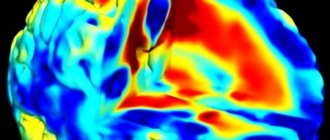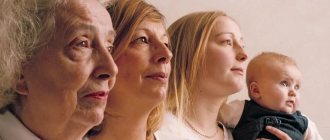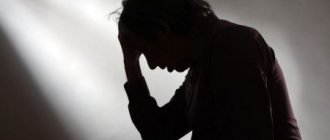Mental illnesses occur in people of all ages – both adults and children. Various symptoms of diseases and the lack of diagnostic criteria for many of them make it difficult to make a timely accurate diagnosis and prescribe effective treatment methods.
The first signs of schizophrenia in children can be regarded by parents and some specialists as a feature of the child’s character, his tendency towards introversion and a quiet pastime. Gradually, the symptoms intensify, and severe mental pathology develops, the treatment of which requires an integrated approach to the problem.
Causes
It is still not entirely clear what actually causes schizophrenia. In most cases, people with schisis had a hereditary predisposition. However, some people did not have this predisposition. Despite this, there are several major theories that, to one degree or another, may contribute to the development of schizophrenia:
- The leading theory is heredity. It has long been noted that in 70-90% of cases, monozygotic twins with at least one parent with schizophrenia become predisposed to the disease. However, this theory is called into question by isolated cases of “pure” pedigree. Hence, two options emerge: either the pedigree of these people has not been studied so thoroughly, or this theory has a place, but it alone is not enough for the development of the disease;
- Stress. A strong emotional shock triggers a cascade of chemical reactions leading to the development of schizophrenia. However, can these reactions exist in a healthy brain or do they only occur in individuals predisposed to it? We hope that in the near future doctors will still make a verdict on this matter;
- Features of education. It has been noticed more than once that in families where parents do not monitor their child and do not show him proper care and love, children grow up with severe mental disorders;
- Puberty. Changes in hormonal levels, leaving parental care, starting an independent life - all this is ideal ground for the formation of a mental disorder. Adolescent schizophrenia is considered the most common form of schizis, and it is a pity that parents and doctors overlook it, considering the child’s whims to be something normal.
Tips for parents
Raising and living together with a child with schizophrenia is quite a difficult task and requires great willpower and patience. The most important thing parents need to do is accept their son or daughter's diagnosis and believe in the success of therapy.
Here are some expert tips:
- There is no need to argue with your child about his hallucinations. For children diagnosed with schizophrenia, their visions are part of reality;
- try to create a comfortable regime and environment so that the child does not experience unnecessary emotional overload;
- try to protect the child from himself during psychosis.
It is important to diagnose the disease in time and begin its treatment. The future of the child largely depends on this. Therefore, if you notice repeated oddities in a child’s behavior, you should consult a doctor without waiting for the first manifestations of the disease.
Forms
Schizophrenia has many forms, some of which are easily confused with each other:
- Simple (sluggish) schizophrenia. It has a gradual onset, usually between the ages of 12 and 14, and can progress slowly throughout life. Patients become withdrawn, duality of judgment appears, apathy and hatred of others increases. Characteristic is “family hatred” - aggression towards one’s parents. Now tell me, does this look like schizophrenia or teenage maximalism and hormonal changes? Hallucinations and delusional judgments may be mild;
- Paranoid. The leading symptom is delusions of persecution, sometimes delusions of jealousy. Auditory hallucinations are common, and visual hallucinations are less common. Voices can be either neutral or violent;
- Hebephrenic - juvenile schizophrenia. The peak incidence occurs at 14-16 years of age; adolescents experience mannerisms, changes in behavior, inability to perform everyday activities, aggressiveness, speech disorder, auditory hallucinations;
- Catatonic. It is expressed in apathy, stupor, freezing in one position, and hallucinations are often present. After stupor comes excitement with uncontrolled copying of other people's statements, movements, facial expressions, gestures;
- Undifferentiated. Mixed form, which does not have pronounced symptoms;
- Post-schizophrenic depression - after the onset of schizophrenia, a person begins to experience a depressive syndrome, the symptoms of which come first. And, as you know, with depression, hallucinations and delusional experiences are also possible;
- Residual. The symptoms of schizophrenia are blurred, but emotional coldness and dullness remain.
RELATED MATERIALS: Mood swings, feelings of depression - cyclothymia
Options for the development of the disease
Depending on the clinical manifestations, the following variants of the development of the disease are distinguished:
- Apato-abulic. It manifests itself in the form of a complete absence of any motives, motivation, or interests. Behavior becomes monotonous and monotonous. A person does not strive for anything, becomes withdrawn and apathetic - negative symptoms are clearly expressed;
- Paranoid. In contrast to apato-abulism, in this case positive symptoms predominate. The patient is delirious, hears voices, and in some cases sees images. Suspicion and distrust of others grows, the person becomes secretive;
- Psychopathic. Delusions and negativism are expressed insignificantly or are absent altogether. Egocentrism, cruelty, dictatorial tendencies come to the fore;
- Pseudo-organic. As a rule, most cases of schizophrenia sooner or later develop into a pseudo-organic variant. It is a manifestation of schizis, mental abilities, intelligence, memory decrease, mental activity is impaired.
How does autism manifest in childhood schizophrenia?
Previously, autism was considered one of the criteria for schizophrenia in childhood. Currently, this disorder is identified as a separate disease. Autism is a disorder in a child's ability to socially interact. In addition, the pathology is characterized by impoverishment or absence of the emotional background and speech reactions addressed to others. Childhood schizophrenia is often accompanied by signs of autism. However, it is not the only manifestation of the pathology and is mild in severity.
Flow
The course of schizophrenia can be:
- continuously progressive. The clinical picture in this case reaches its maximum and is difficult to treat. Productive symptoms after taking antipsychotics are somewhat smoothed out, delusions and hallucinations become less pronounced. But negativism—emotional coldness and dullness—is growing;
- paroxysmal-progressive. With this variant of the course, it is possible to achieve long-term remission; personality changes still occur, but much slower than with the continuously progressive variant.
Principles of treatment
The diagnosis of schizophrenia necessitates the use of a classical treatment regimen. It includes the following steps:
- relief therapy;
- stabilizing (follow-up) therapy;
- maintenance therapy.
The goal of relief therapy is to eliminate the symptoms of the disease (delusions, hallucinations, psychomotor disorders). Antipsychotic drugs are used in treatment. During stabilizing therapy, a drug is prescribed that was used in the first stage and had a positive effect. The antipsychotic is used in a smaller dose until symptoms are completely eliminated. Maintenance treatment is carried out with the same drugs that eliminated the manifestations of the disease, but in much lower dosages to prevent relapse.
Signs of schizophrenia in children under 7 years of age
As stated earlier, diagnosing schizophrenia in young children is very difficult. This can only be judged indirectly, since the development of each child is different; some children do not speak well until the age of 3-4, so they cannot talk about what worries them. Schizophrenia can be assumed if the child does not pay attention to the parents, but looks focused at “something,” talks to it, or shows any emotions in relation to this object. Such children are lethargic, apathetic, eat and play poorly. They get along poorly with peers and try to communicate with older children.
Signs of schizophrenia in children have a blurred line with the normal development of the child, with his individual characteristics. So, it should be alarming that a child can play with himself for a long time, constantly performing the same actions (for example, assembling a construction set for several hours). Such children are easily excitable, vulnerable, easily offended, but at the same time they are slow and efficient, and their fine motor skills are poorly developed. Symptoms increase with age. Don’t expect your child to tell you about a “non-existent friend”; simple observation of the child can reveal the pathology. If he often freezes in place when playing, laughing or crying for no reason, this is at least a neurological profile. Freezing in place can be a manifestation of epilepsy, so first consult a neurologist, and only then go to see a psychiatrist.
Signs of schizophrenia in school-age children and teenagers
Signs of schizophrenia in a teenager are more specific than in younger children. The child becomes apathetic, aggressive, withdraws into himself, stops communicating with people around him and maintains contact only with isolated individuals. Mysticism is often observed, the child “gets into” philosophy, religious teachings, and begins to look for double meanings everywhere.
Symptoms of schizophrenia in adolescents can be vague, or they can be quite pronounced. With sluggish schizophrenia, a person may not even know about his chronic illness in old age. After all, at an appointment with a psychologist or neurologist, when you complain of short-term hallucinations, you will immediately be diagnosed with neurosis. Hallucinations also happen with chronic fatigue, you know. One of the main aspects of schizophrenia is ambivalence of thinking. The teenager is “torn in half” and experiences opposing feelings towards the same object. The unusualness of thinking and reasoning are striking. If you ask a teenager to describe an object, he will use more adverbial or participial phrases rather than speak directly. For example, a chair is an object on which one sits (this is what most people will answer). A teenager with schizophrenia will note the following: “A chair is an object that has four legs, a back, it can be wooden, or it can be metal, we need it to sit.”
RELATED MATERIALS: What is hypochondria and how to overcome it
In the catatonic form, the leading symptom will be stupor, which can last for hours or even days. After this, the child becomes agitated, aggressive, and can hurt himself and others. With this form of schizophrenia, as a rule, the diagnosis does not cause difficulties.
A child with schizophrenia has abstract thinking, which allows him to actively engage in creativity, write poetry or draw. Many creative people had one mental disorder or another: Russian writer N.V. Gogol. was a schizophrenic, but this did not stop him from becoming an outstanding person of the 19th century. Lovecraft G.F. wrote many books with fantastic content. After repeated analysis of his works, he was also diagnosed with schizophrenia.
There are many such examples that can be cited; madness accompanies geniuses.
Forecast
The doctor will be able to give an accurate prognosis only after studying the medical history and conducting diagnostics. A mild form or timely detection of the disease usually allows the child to get rid of most symptoms and live a normal life without limiting himself in any way.
With a more serious development of schizophrenia, the child may be deprived of the opportunity to attend a general education institution, since he is capable of harming himself or the people around him. In such cases, he has to learn to write, read and feel at home. Most often, children with such disabilities can communicate normally with people if they receive the necessary treatment.
The main task of parents is to give maximum attention to the child. Children with schizophrenia are especially vulnerable. Therefore, it is necessary to be understanding, be gentle with them and show your love so that they can feel it. If treatment does not produce results and the child shows aggression, you should still adhere to the right position, radiating only goodness. Any negative actions can worsen the situation. At the same time, parents need to closely monitor the daily routine and hobbies of the schizophrenic, based on the recommendations of the attending physician.
In the absence of treatment or severe forms of schizophrenia, the development of autism is possible, with which doctors sometimes confuse the disease due to similar symptoms.
Diagnostic features
Schizophrenia in adolescents can masquerade as neuroses, bipolar personality disorder, depression and many other psychiatric pathologies. The diagnosis of schizophrenia is a subjective conclusion of a psychiatrist. Previously, all mental disorders, including neurotic disorders, were classified as schizis. It was believed that schizophrenia is a collective concept of all diseases of this profile. In part, this theory is correct. After all, with schizis there can be depression and manic states, and we should not forget about neurosis-like schizophrenia, which is almost impossible to distinguish from true neurosis. In modern society, the diagnosis is made on the basis of positive and negative symptoms, with hallucinations being a mandatory criterion.
Additionally, it is possible to prescribe a CT scan of the brain, EEG, and blood for herpes viruses type 4.5, but they, as a rule, do not differ from the results of an ordinary person.
Working with a psychiatrist is of great importance. In particular, this is conducting Rorschach, Szondi, Luscher tests, association tests (draw parallels between things that are not connected in any way). People with schizophrenia will always find something in common. For diagnosis, analysis of the drawing is important, which may indirectly indicate schism. The drawing has whimsicality, unusual sizes and shapes. If a child draws a person, he will be disproportionate, disfigured, with long limbs and fingers. The presence of spikes, claws, and pronounced teeth indicates aggression. And the absence of a mouth is an alarming signal - apathy and abulia.











